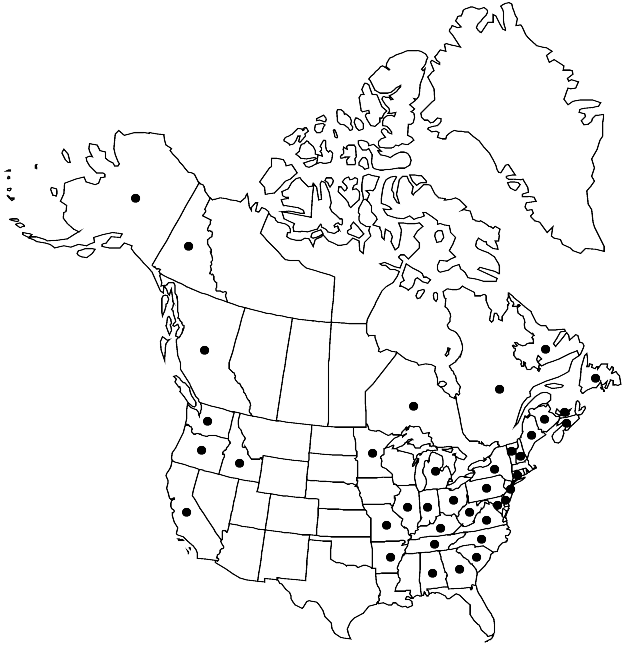Pseudotaxiphyllum elegans
J. Hattori Bot. Lab. 63: 449. 1987.
Plants in thin to dense mats, dark green to yellowish. Stems 3.5 cm, 1–2.5 mm wide, complanate-foliate. Leaves erect-spreading or sometimes secund with apices pointing toward substrate, not upturned-homomallous, close to somewhat distant, lanceolate, ovate or oblong-lanceolate, symmetric, smooth or weakly undulate, 0.3–2 × 0.2–0.7 mm; margins plane, serrulate to entire proximally, serrulate to strongly serrate distally; apex acuminate; costa double, strong; alar cells undifferentiated or quadrate to rectangular, 1–3 on margins; medial laminal cells 48–100 × 4–7 µm; distal cells sometimes minutely prorulose at distal ends on abaxial surface. Specialized asexual reproduction present as propagula clustered in leaf-axils below stem apices, 0.5–1.5 mm, yellow to green, not twisted-vermiform, resembling parent plant but smaller, bearing reduced leaves from apex to base of stems. Sexual condition dioicous. Seta 1–2.5 cm. Capsule cernuous to pendulous, oblong-ovoid to ovoid, 1–2 mm; operculum conic to short-rostrate. Spores 7–12 µm.
Phenology: Capsules mature spring–summer.
Habitat: Woods, acidic rock and soil, humus, base of trees, rotten logs
Elevation: low to high elevations (0-2000 m)
Distribution

B.C., N.B., Nfld. and Labr., N.S., Ont., P.E.I., Que., Yukon, Ala., Alaska, Ark., Calif., Conn., Del., Ga., Idaho, Ill., Ind., Ky., Maine, Md., Mich., Minn., Mo., N.H., N.J., N.Y., N.C., Ohio, Oreg., Pa., S.C., Tenn., Vt., Va., Wash., W.Va., s South America (Argentina).y
Discussion
Pseudotaxiphyllum elegans is morphologically similar to 2. P. distichaceum. For distinctions, see discussion of that species.
Selected References
None.
